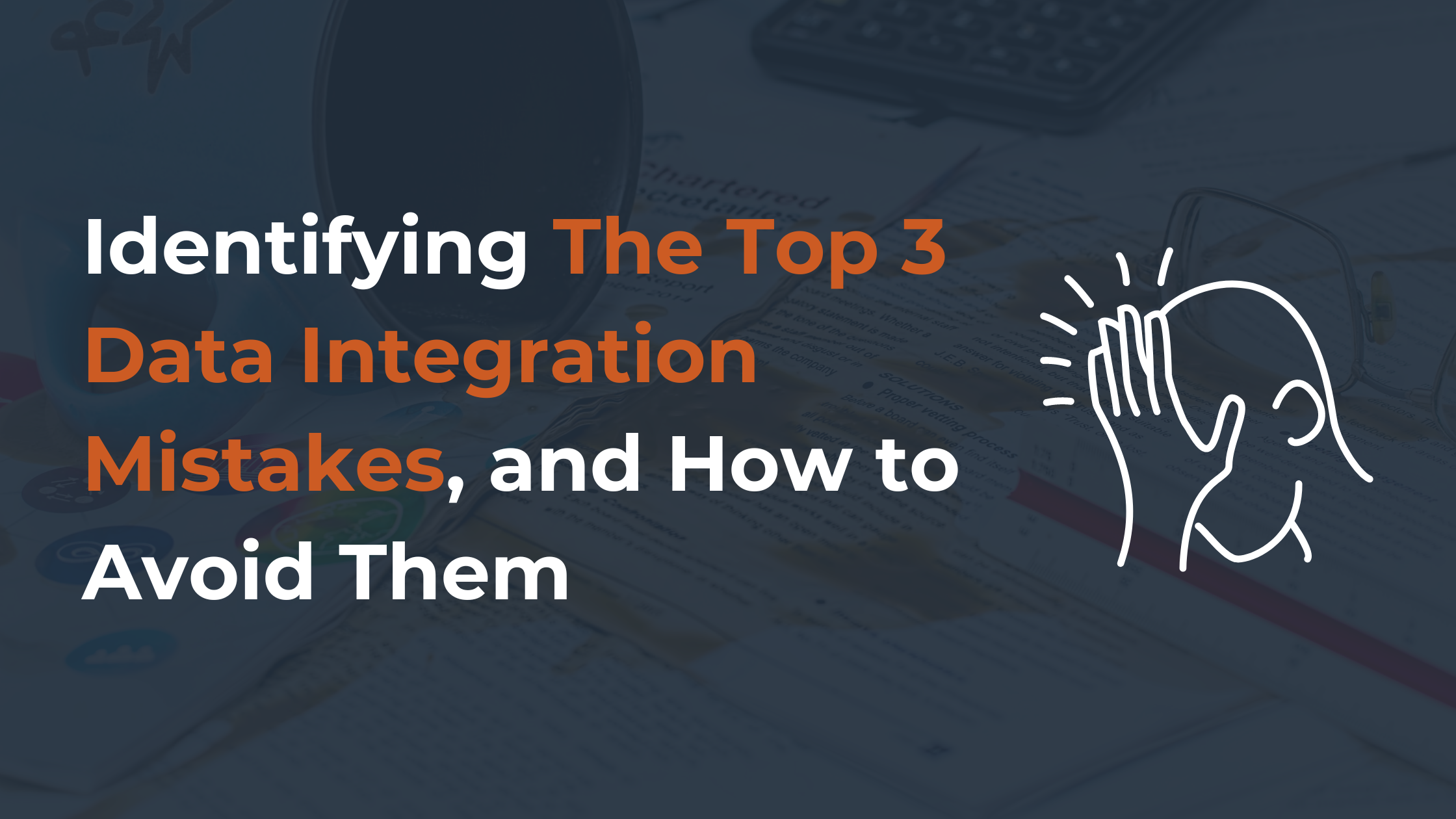Quite often, the process of data integration is far from seamless, resulting in integration mistakes that produce sub-optimal and costly results. To take advantage of the collected data, identifying the top 3 data integration mistakes and avoiding them is critical to the overall business prospects of a company.
The Top 3 Data Integration Mistakes
- Selecting a data integration solution that scales poorly
- Failing to consider the data types
- Neglecting to provide adequate security
Selecting a data integration solution that scales poorly
Oh man, you see this all the time - companies get so focused on finding a data integration solution that fits their immediate needs that they totally overlook the long-term consequences.
A non-enterprise level solution might work okay for a smaller business, but as that company grows and has to start pulling data from tons of different source systems, the performance is just going to tank. And ignoring the latency factor in a data integration setup?
That's a recipe for super slow performance and unpredictable, hard-to-fix results.
Failing to consider the data types
A lot of the major data integration mistakes really come down to not understanding the full scope of the data you're dealing with across all those source systems.
You've got proprietary data, data stored in different formats like block storage and data objects - and when you don't account for all that complexity upfront, it leads to integration errors, data mismatches, and bad translations.
It's critical for companies to really map out the data structures and translations they need before they even start plugging into a data integration engine.
Neglecting to provide adequate security
Let's not forget about security - that's another area where companies often drop the ball. If your data integration solution doesn't have robust encryption, identity verification, and other essential security features, your data is left vulnerable during transmission and storage.
And that can open the door to compliance issues and nasty lawsuits if that sensitive data ever gets compromised. Definitely not the kind of risk you want to be taking.
Avoiding these top 3 data integration mistakes will permit a company to make advantageous use of their integrated data resulting in increased business and sales growth.
Executing a Proactive Integration Approach
A forward-looking integration strategy is a must if you want your data efforts to be scalable over time. This implies selecting a data integration solution that satisfies your current requirements and also has the capability to grow and adjust as your business grows and your data needs become more complex.
When considering potential solutions, pay attention to their capability to integrate various data sources, process large data volumes, and keep up with new technologies.
By incorporating cloud-based options, you will get the flexibility and scalability that you will need.
Quality and Compatibility are stressed
One of the major problems of data integration is that there are many data types. To solve this, the organizations should really make data quality the first priority from the beginning. It implies setting up clear data governance policies and procedures that will ensure that your data is correct and consistent.
Having robust data cleaning and transformation tools can help in handling all those diverse formats and structures. And the middleware solutions that can help translate between different data types and protocols should not be neglected - they can save you a lot of pain in minimizing integration errors and mismatches.
Strengthening Data Security Measures
In any data integration plan, security should be given the highest priority. Having basic encryption and identity verification is not enough; you need complete security frameworks that protect your data whether at rest or in transit.
This also includes advanced encryption protocols, recurring security assessments, and implementation of a zero-trust security posture for strict control and monitoring of data access.
And lastly, having a clear understanding and compliance with the relevant data protection regulations such as GDPR or CCPA is vital to protect your company and build trust with customers.
The Utilization of Artificial Intelligence
When you use AI and machine learning technologies in your data integration processes, you will have a major edge.
These potent instruments can be used for the automation of data errors’ detection and correction, prediction and control of data flow based on usage patterns and optimization of integration tasks for speed and efficacy.
With AI and ML, you will get highly accurate, timely, and informative data analysis that will enable better decision-making and strategic planning.
Continuous Learning and Adaptation
The environment of data integration is dynamic, being determined by new technologies and altering business requirements.
To be ahead of the game, organizations should have the culture of continuous learning and adaptation. This implies conducting regular data integration strategy reviews and updates, finding out the current tools and trends, and creating an innovative culture in your teams.
Conclusion
Those top three data integration mistakes should be avoided at all costs if you want to maximize the value of your integrated data.
When you proceed with this holistic strategic approach – from proactive integration to data quality, security, AI, and continuous adaptation – you will be able to realize the entire value of your data assets. That will lead to a substantial business and sales growth that will make you successful for the long term.
Wanting to know more about how to take your data integration to the next level?








